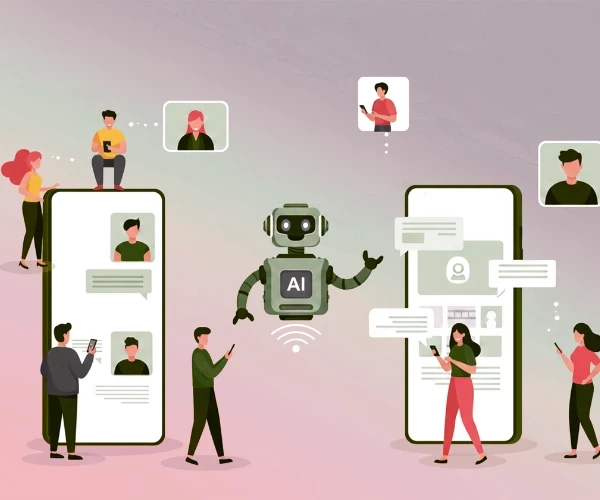L&D Leaders: Are You Prepared for an Economic Hurricane?
Add bookmark
Brace for an Economic Hurricane. This is a daunting time for L&D organizations now required to provide their companies with the required skill sets to manage in an inflation-driven, recessionary economy.
It's not too late to prepare both the internal learning organization & the total enterprise to thrive and survive in a world turned upside.
Recession threat is Looming. L&D executives from the world's largest organizations, prominent economists of all stripes & a virtual "Who's Who" in the world of finance, banking and Fortune 1000 organizations are saying a deep & long recession is now a near-certainty (if current economic and energy policies remain static).
Normality is Yesterday's Reality. It won't return. What exists today is of necessity the products/services of yesterday.
Just as Generals tend to prepare for the last war, business executives always tend to react in terms of their most recent experiences – not rapidly approaching new realities.
TODAY's new realities must be realistically understood by L&D professionals & the appropriate change policies put into action – now!
This requires, in large part, "innovation" not "creativity."
A Final Prefacing Message
Many experts in the field of L&D have served up splendidly expensive packages/messages that are solemnly inspirational.
Unquestionably, these messages stimulate, if not always thought, at least adrenaline.
This effect has some virtue but generally lasts about as long as it takes to get back to today's most pressing L&D problems that must be confronted and solved ASAP.Producing and managing purposeful innovation will become a survival necessity for most L&D organizations & the total enterprise.
Simply put, creativity alone will not suffice.
L&D executives and professionals will soon be called upon to thoughtfully and thoroughly prepare themselves and the organization's workforce for continuous productivity improvement at unprecedented levels.
This will require the necessity of action – not flights into rhetoric or retreat into analysis.
Strategically Repositioning L&D's Role In Enabling The Organization to Weather the Coming Economic Hurricane
L & D organizations are now charged with the awesome responsibility of creating the appropriate learning/training programs that produce continuous improvement in workforce productivity.
Almost every organization is now confronted with two distinct challenges – namely: (1) attempting to provide wage increases to employees to keep pace with today's price inflation and; (2) remaining price competitive in today's hyperinflation environment.
How Does This Relate to Learning Programs That Focus on Continuous Productivity Improvement?
Organizational resources are made productive – or deprived of productivity – by individual managers within their own individual sphere of responsibility.
The job of L&D organizations – whether explicitly recognized or not – is to constantly increase workforce productivity – indeed, as is done in many organizations, at a fixed rate of increase per year.
Today, workforce productivity can be increased in a variety of ways including making the organization digitally literate, proven applications of AI, reengineering processes, launching corporate universities/digital academies, organized sharing of best internal practices and much, much more!
Voilà! A Magical Equation That Explains Why Wages Must Not Rise Faster Than Worker Productivity
A simple equation formulated by C. Jackson Grayson (former pricing czar in the Nixon administration) explains quite well how constantly increasing productivity enables employees to receive the appropriate increases in wages and, quite possibly, avoid or minimize passing on the cost of wage increases to consumers.
Now Grayson's easy-to-understand equation:
Wage Increases minus Productivity Increases= Price Increases |
For example, if wages increase by 10% and productivity increases by 3%, then consumer prices would increase by 7%.
It's timeless economic wisdom. Wage increases cannot increase faster than productivity increases if organizations are expected to avoid or minimize passing on wage increases to consumers.
From all the available evidence, productivity (especially knowledge/service worker productivity) will not keep pace with the demand for increased wages given today's out-of-control price inflation.
Take-Home Message
If L&D organizations can provide the necessary learning with respect to achieving ever-increasing productivity – and they most certainly can – it's quite possible the organization can retain employees by providing wage increases to help workers keep pace with today's upward spiraling prices.
Also, it's quite possible to avoid (or at least minimize) corporate price increases to customers – and remain price competitive or even possibly achieve a price leadership position in the marketplace.
Our point? For an organization to survive & thrive in the rapidly approaching economic hurricane, continuous productivity improvement must become a central learning/training task.
What L&D Organizations/Leaders Tend Not To Tell CFOs/CEOs
Once the seemingly elusive concept of continuous productivity improvement is understood by L&D leaders – they will inform CFOs/CEOs of this Drucker-inspired insight.
Here's a promise: It will make a big, big difference.
With a tightening economy, demands from CFOs/CEOs to quantify the value gained from investments in training will gain momentum. Be prepared!
A Lesson From General Electric
Back in the 1980s, Jack Welsh, former CEO of GE, used the Drucker principle of continuous productivity improvement to achieve market leadership and successfully cope with the inflation-driven recession of that time period.
In every industry, and in every branch of human activity, there are institutions that operate at a substantially higher productivity level than the average.
Said Drucker: "What makes one company stand out and lead in any one industry, in any one economy, in any one area, is that it operates at about twice the average productivity of its industry, its economy or its area…
… Above all, the leading company always operates at about twice the average productivity of capital (i.e., the return on invested capital allocated to a specific area)."
GE, when led by Jack Welsh, followed Drucker's prescription for achieving quantum leaps in shareholder value by focusing L&D among other groups within the organization on never-ending productivity improvement – especially, in the area of workforce productivity.
What set GE apart from (at the time) Westinghouse, its closest competitor and the industry's number two, was the fact that GE got twice as much work out of a dollar as Westinghouse did.
Indeed, GE far surpassed Westinghouse in a relatively short period of time. Interestingly, GE did not owe its relatively sudden leadership position to any major technological advancement.
More...
Plain and simple, Welsh focused on how to manage consistently, systematically, and conscientiously for never-ending productivity increases – and this was accomplished with invaluable assistance from its L&D organization.
The beacon of continuous productivity improvement was GE's guidepost designing and implementing both formal courses and continuous learning programs (disseminating best internal practices on an organized basis).
Welsh charged GE's L&D leaders with the task of using training to herald a commitment to a new strategic initiative – all with the underlying purpose of achieving continuous productivity improvement.
For example, inflation accounting, pricing strategies in an inflationary economy, making the organization inflation-proof, formalized strategic planning (what should the business be), and technology management programs of all kinds were introduced to executives/managers through formal training programs.
According to published reports, almost 100,000 managers and service professionals attended programs lasting several days in each systematic, well-organized learning/training program.
The point? Productivity improvement training was emphasized at a time of crisis.
GE didn't cut the training budget when an inflation-driven, recessionary economy was wreaking havoc on American businesses
Take-Home Message
L&D organizations would be well advised to follow the guiding principles that enabled GE to survive and thrive in the turbulent 80s and achieve market leadership over all rivals.
To the uninitiated, focusing on continuous productivity improvement seems rather academic or unnecessary.
But continuous, organized improvement (what the Japanese, W. Edwards, Deming, Drucker, and Joseph Juran labeled "Kaizen," eventually transforms an organization in multiple ways.
Continuous improvement leads to new innovations; new services to surround a given product; new processes; new businesses and the like.
Eventually continuous improvements lead to fundamental change.
Today every L&D organization must focus on subjects such as creating a truly digital organization… reengineering or redesigning organizational structures to enhance engagement and commitment… improving skilling, re-skilling and up-skilling processes via usage of augmented/virtual reality and other breakthrough learning and delivery technologies.
Conclusions
In summary there is good news and bad news.
The good news: There is good news that given today's grim prognosis of a slow/no economic growth coupled with crippling inflation, the L&D organization can help the organizations thrive on unprecedented chaos.
The bad news: Pace. Many L&D organizations may not be moving quickly enough or with enough urgency to achieve extraordinary responsiveness to the realities of slow economic growth, falling real wages, and soaring prices.

























